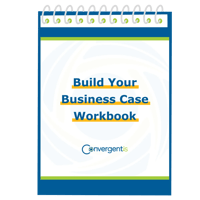When it comes time for year-end reporting, you might notice the consolidation process is endless. It can be painful to collect data from your team, ensure all the right information has been accounted for, and there are no user errors. Even worse, perhaps your data already exists in your SAP system while the rest is held in non-SAP tools like Excel. Having duplicate data makes it hard to gather all information and ensure accuracy when moving from one platform to another. When data is missed, your leaders’ decisions will inevitably be made on incomplete data. It also makes seemingly simple tasks frustrating for your accounting team.
Fortunately, there are now many tools your accounting team can use to consolidate financials. Even within SAP. With promotion of newer products like SAP Analytics Cloud (SAC), this has led many to wonder exactly what is financial consolidation in SAP? In this article we want to compare SAP Business Planning and Consolidation (SAP BPC) and SAP Financial Consolidation (SAP FC) with Group Reporting. In addition, we will also consider how SAC can be used in conjunction with these consolidation tools.
SAP Business Planning and Consolidation
SAP BPC is a known application for planning, budgeting, forecasting, and financial consolidation capabilities. Well-known by many SAP customers, several other products have since been released by SAP to improve on the functions of BPC without starting from scratch. One of these is SAC. If your business currently already operates the SAP BPC embedded or standalone application on-premise, you can still configure SAC as the primary screen your users will see. This hybrid approach can be done with a BPC live connection and is just one of the configuration options your business might decide to deploy. Companies are wise to use this hybrid approach since the user interface (UI) of SAP BPC is known to be not very intuitive and difficult to set up dynamic dashboards. As a result, poor dashboards equal difficult decision making.
Therefore, SAC should be viewed as a platform used to integrate your analytics and planning strategy. While it isn’t a financial consolidation tool, it does have presentation functionality that SAP BPC does not have. SAC also allows users to see all the necessary analytics in one view.
When to Use SAP Financial Consolidation
Additionally, there is also an SAP solution for consolidation known as SAP Financial Consolidation (SAP FC). SAP FC is an entirely different offering than SAP BPC and is instead differentiated to support more complex tax and statutory requirements. This means if your business deals with hundreds of Legal entities, GAAP reporting requirements and different ownership structures, SAP FC might be the better tool. It, however, is not created to support processes around these functions such as budgeting, planning or forecasting. These are functions that would be included in SAP BPC.
Both SAP BPC and SAP FC can be integrated into SAC to collaborate and share insights. That said, both tools are also entering the maturity phases of their use. This means that SAP is now transitioning their strategy to focus on SAP Group Reporting as a consolidation solution. Although newer, customers can expect that features available on SAP BPC and SAP FC will quickly be introduced in future releases. Using live data connections, group reporting can also integrate with SAC for improved analytics. The benefits to leveraging both tools will be further identified in the section to follow.
Reporting Your Consolidated Financials
It is important to note, SAP Analytics Cloud is not a financial consolidation tool. However, SAP Analytics Cloud can integrate data from sources including OData, Microsoft Excel, Google Drive, SQL server and Salesforce, to name a few. On one dashboard, you can manage all the finances across your business. Financials can be consolidated in S/4HANA group reporting, and your accounting team can use SAC to report these consolidated figures accurately and with confidence. It is then recommended that businesses use SAC to report these consolidated figures since it has a more robust visualization aspect than SAP Business Planning and Consolidation. The out-of-the-box visual elements on SAC have significantly reduced formatting time, improving the overall user experience.
With SAC, customers can perform real-time analytics on financial data. This can then be presented with stories that can include charts and tables. As mentioned previously, SAC is not a financial consolidation tool. This means management and financial consolidation can be done on SAP BPC, SAP FC or Group Reporting on SAP Business Technology Platform (BTP). Therefore, taking advantage of SAP analytics capabilities is feasible regardless of what your business is currently using or hopes to use when maintenance of existing products ends.
Get the Most Out of SAP Analytics Cloud
As a trusted SAP partner, the ConvergentIS team can help you get the most out of this tool and seamlessly deploy it. Since it is your people that make a business thrive, we take the time to understand how your team currently operates and help you fill the gaps between these operations and your new SAP tools. Identifying existing gaps is the first step in creating a user experience that makes sense within your business.
See how this plays into your larger business case, using our free build your business case workbook.


